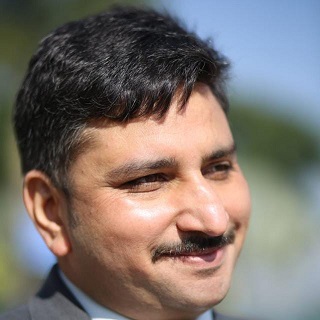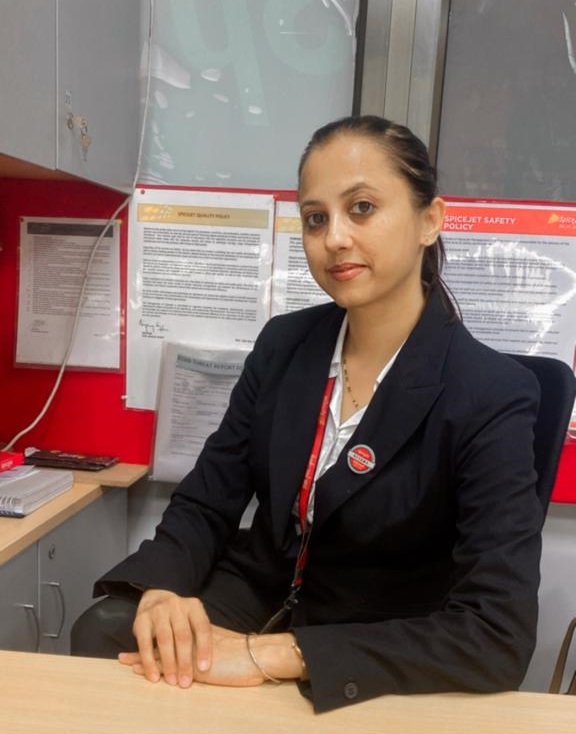My City My Place: Jaipur
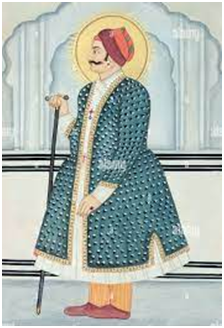
Introduction:
My city Jaipur (formerly Jeypore), is the capital and largest city of the Indian state of Rajasthan. Jaipur is also known as the Pink City, due to the dominant colour scheme of its buildings. It is also known as the Paris of India, and C.V. Raman called it the Island of Glory.
The city of Jaipur was founded by the king of Amber, Maharaja Sawai Jai Singh II on 18-Nov-1727, who ruled from 1699 to 1743. Jaipur was planned based on the principles of Vastu Shastra and Shilpa Shastra.
In this article, we will explore some of the best tourist places to visit in Jaipur, along with its mouth-watering cuisines and the ideal time to experience Jaipur City.
Amber (Amer) Fort:
Located high on a hill, it is the principal tourist attraction in Jaipur. Amer Fort is known for its artistic style elements. With its large ramparts and series of gates and cobbled paths, the fort overlooks Maota Lake, which is the main source of water for the Amer Palace. It is the great example of Rajput Architecture. Some of its buildings and work have influence of Mughal architecture. Constructed of red sandstone and marble, the attractive, opulent palace is laid out on four levels, each with a courtyard. It consists of the Diwan-e-Aam, or “Hall of Public Audience”, the Diwan-e-Khas, or “Hall of Private Audience”, the Sheesh Mahal (mirror palace), or Jai Mandir, and the Sukh Niwas where a cool climate is artificially created by winds that blow over a water cascade within the palace.
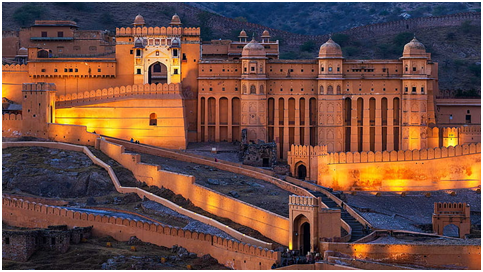
Hence, the Amer Fort is also popularly known as the Amer Palace. The palace was the residence of the Rajput Maharajas and their families.
Raja Man Singh had 12 queens so he made 12 rooms, one for each Queen. Each room had a staircase connected to the King’s room but the Queens were not to go upstairs. Raja Jai Singh had only one queen so he built one room equal to three old queen’s rooms.
Jal Mahal :
Jal Mahal is a palace in the middle of the Man Sagar Lake in Jaipur city, the capital of the state of Rajasthan, India. The palace was originally constructed around 1699; the building and the lake around it were later renovated and enlarged in the early 18th century by Maharaja Jai Singh II of Amber.
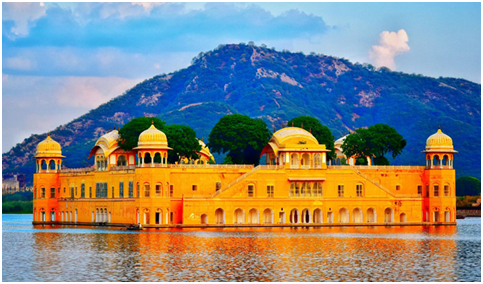
The Jal Mahal Palace is an architectural showcase of the Rajput style of architecture (common in Rajasthan) on a grand scale. The building has a picturesque view of Man Sagar Lake, but owing to its seclusion from land is equally the focus of a viewpoint from the Man Sagar Dam on the eastern side of the lake in front of the backdrop of the surrounding Nahargarh (“tiger-abode”) hills. The palace, built with local sandstone, is a three-storied building, with the third floor only existing on the eastern side of the palace. The eastern side is not visible from the road side public promenade, which is the Western side of the palace. The additional lower levels of the eastern side remain underwater when the lake is full. The Jal Mahal has a terrace floor with a garden and the garden has 4 Tibaris facing North, South, East and West directions.
Hawa Mahal:
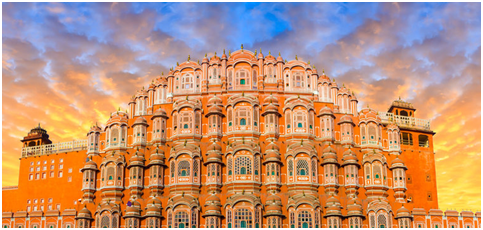
The Hawa Mahal is a palace in the city of Jaipur, India. Built from red and pink sandstone, it is on the edge of the City Palace, Jaipur, and extends to the Zenana, or women’s chambers.
The structure was built in 1799 by the Maharaja Sawai Pratap Singh, grandson of Maharaja Sawai Jai Singh, the founder of the city of Jhunjhunu in the state of Rajasthan. He was so inspired by the unique structure of Khetri Mahal that he built this grand and historical palace. It was designed by Lal Chand Ustad. Its five-floor exterior is akin to a honeycomb with its 953 small windows called Jharokhas decorated with intricate latticework.
The original intent of the lattice design was to allow royal ladies to observe everyday life and festivals celebrated in the street below without being seen. This architectural feature also allowed cool air from the Venturi effect to pass through, thus making the whole area more pleasant during the high temperatures in summer.
Jantar Mantar: The Jantar Mantar, Jaipur is a collection of 19 astronomical instruments built by the Rajput King SawaiJai Singh, the founder of Jaipur, Rajasthan. The monument was completed in 1734. It features the world’s largest stone sundial, and is a UNESCO World Heritage Site. It is near City Palace and Hawa Mahal. The instruments allow the observation of astronomical positions with the naked eye. The observatory is an example of the Ptolemaic positional astronomy which was shared by many civilizations.
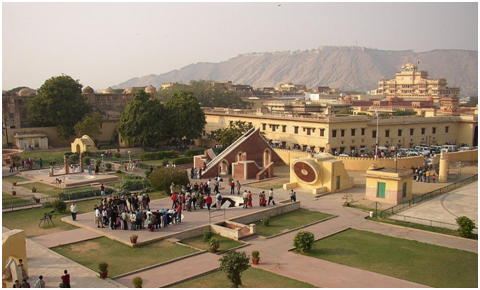
The monument features instruments operating in each of the three main classical celestial coordinate systems: the horizon-zenith local system, the equatorial system, and the ecliptic system. The Kanmala Yantraprakara is one that works in two systems and allows transformation of the coordinates directly from one system to the other. It has the biggest sundial in the world.
Nahargarh Fort:
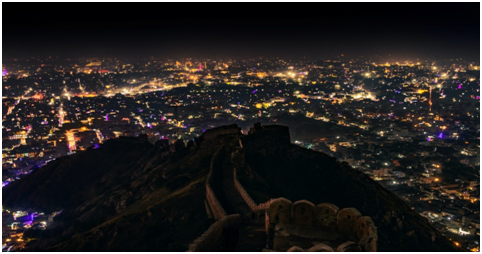
Nahargarh Fort stands on the edge of the Aravalli Hills, overlooking the city of Jaipur in the Indian state of Rajasthan. Along with Amer Fort and Jaigarh Fort, Nahargarh once formed a strong defence ring for the city. The fort was originally named Sudershangarh, but it became known as Nahargarh, which means ‘abode of tigers’. The popular belief is that Nahar here stands for Nahar Singh Bhomia, whose spirit haunted the place and obstructed construction of the fort. Nahar’s spirit was pacified by building a temple in his memory within the fort, which thus became known by his name.
Dal Batti Churma :
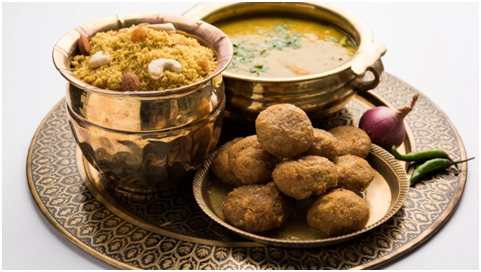
Dal Batti Churma is probably the most famous dish in Jaipur and a definite must-eat if you ever find yourself in the city. It is a specialty of Rajasthan and is considered a wholesome meal. A lentil curry or Dal is served with Batti, which is a stuffed baked flour in a round shape that is cooked in an oven or over charcoal. Churma is a dessert that is served with this dish and is made with flour, ghee, sugar or jaggery.
Ghewar: Ghewar is another addictive Rajasthani dessert that will leave you wanting more. It is a sweet dish which is deep fried and is very popular during festivals such as Teej and Gangaur. This dessert can be enjoyed in different varieties such as desi ghee Ghewar, plain Ghewar, and Mawa Ghewar. Like all the popular desserts in Rajasthan, you can find Ghewar in any sweet shop in Jaipur.
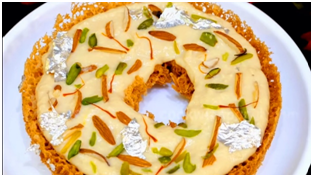
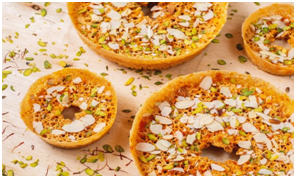
Markets to visit in Jaipur (Pink City)
Johari Bazaar: A shopper’s paradise and a must visit, Johari Bazaar in Jaipur has a reputation that precedes itself. Located near Hawa Mahal, this market of exquisite jewellery and artefacts to choose from, can immerse shoppers in its glittering glory. It is considered to be one of the oldest markets of Jaipur City.
While most visit the Pink City for its gorgeous monuments and impregnable fortresses, shopping is a delight while in Jaipur. A place known for its bohemia of different types of jewellery, Johari Bazaar will definitely get your shopping instincts running.
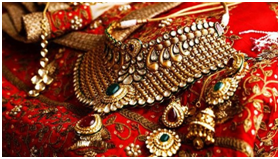
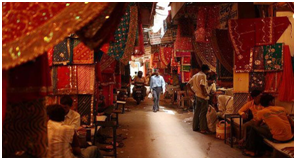
Chandpole Bazaar: For a delightful shopping experience, visit Chandpole Bazar in Jaipur. A traditional market in Pink City, this shopping place was one of the first built markets in Jaipur and is almost three centuries old. Chandpole Bazaar’s foundation was laid in 1727 AD, which stretched from East to West. Located in the western part of Jaipur, the market was name Chandpole Bazaar. It is also said to be on low lying Aravali mountain ridge that divides the Pink City into two.
One of the best places to shop in Jaipur, Chandpole Bazaar is a must-visit market on your Jaipur trip. It mesmerizes the tourists with its pink symmetrically built shops and gives the market Jaipur’s signature charm. If you look at the mansions here, they are built in a unique style as well.
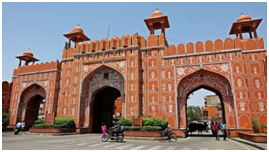
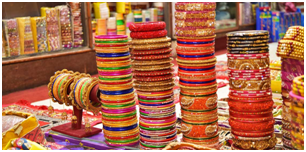
Best time to Visit Jaipur:
The best time to visit Jaipur is during the winter season in the months of October and March when temperature ranges from 8°C to 22°C. Jaipur sees the highest number of tourists during the months from October to March because the weather remains very pleasant and a number of festivals such as Diwali, Jaipur Literature Festival, and International Kite Festival are celebrated during the winter season only. It is also an ideal time to visit Jaipur for outdoor sightseeing. Owing to its desert location, the weather in Jaipur in December is quite good in comparison to other cities, making it a favourite spot for an excursion.
Jaipur is a beautiful city with a rich cultural heritage, vibrant markets, and majestic palaces. The city is known for its beautiful forts, temples, and delicious food. It is a must-visit destination for all those who want to experience the rich history and culture of Rajasthan. Jaipur is also known for its delicious food. The city is famous for its traditional Rajasthani cuisine, which is a blend of spices and flavours.
Plan your visit to Jaipur and let yourself be enchanted by its rich cultural heritage, delicious foods and warm hospitality.
By- Jaipur Team (Mr. Piyush Jangid, Mr. Vinoth G)


